Mesotherapy in Saudi Arabia
Search and Compare the Best Clinics and Doctors at the Lowest Prices for Mesotherapy in Saudi Arabia
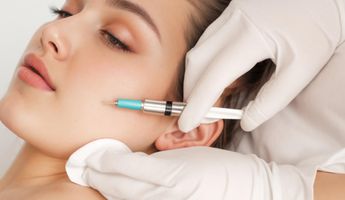
Find the best clinics for Mesotherapy in Saudi Arabia
No pricing info available
Ukraine offers the best prices Worldwide
Price: $ 20
From 88 verified reviews
Ferdinand Sugay, 25 August 2020
Highly recommend the dental clinic
- Home
- Saudi Arabia
Compare Before & After Photos of _procedure_photos.phpMesotherapy
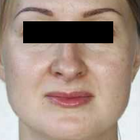
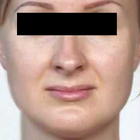
Front view

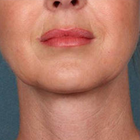
Front view
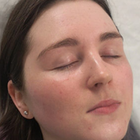
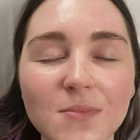
Front view

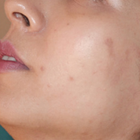
Half-side view

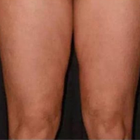
Front view
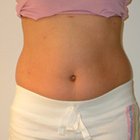
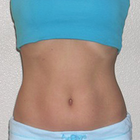
Front view
WHY US?
At Medijump, we're making medical easy. You can search, compare, discuss, and book your medical all in one place. We open the door to the best medical providers worldwide, saving you time and energy along the way, and it's all for FREE, no hidden fees, and no price markups guaranteed. So what are you waiting for?

Free

Best Price

Widest Selection

Risk-Free
What you need to know about Mesotherapy in Saudi Arabia
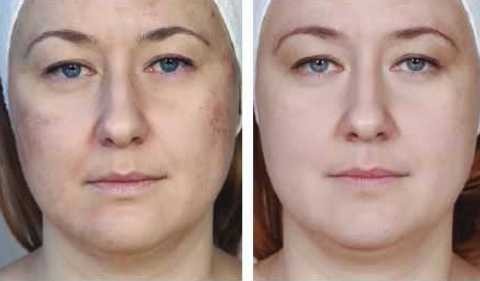
Mesotherapy is a nonsurgical technique that uses micro-injections of vitamins, hormones, enzymes, and plant extracts. Its goal is to rejuvenate and tighten the skin. It is also used to reduce cellulite, lighten pigmented skin, fade wrinkles and line, treat alopecia and encourage hair growth, recontour the body, as well as to remove fat in areas such as the thighs, stomach, buttocks, legs, hips, face, and arms.
Very fine needles are used to deliver a series of injections into the middle layer of the skin. These injections are believed to correct underlying issues, such as inflammation and poor circulation, which cause skin damage.
Before mesotherapy, you may have problems like stubborn fat in certain areas of the body, wrinkles and fine lines in the face, pigmented skin, etc. After the procedure, you’re dull and tired-looking skin will be improved, superficial wrinkles will fade, and excess fat will be reduced. If you undergo the procedure to treat alopecia, you can also expect the procedure to promote hair growth.
What does a Mesotherapy Procedure Involve?
While mesotherapy is nonsurgical and not painful, it can be slightly uncomfortable. Therefore, you may have anesthetic cream applied to your skin to numb the affected area.
Using a special short needle, you will get a series of injections. The injections can be carried out on the face, neck, scalp, chest, hands, and other areas of the body that may have problems you wish to address. There is not a standard formula for the substances injected. The practitioner may use a combination of different substances, including vitamins and minerals, enzymes (such as hyaluronidase and collagenase), herbal extracts, hormones (such as thyroxin and calcitonin), as well as prescription medicines (such as antibiotics and vasodilators). The substances used depends on what you want to treat. For instance, the treatment for cellulite and body fat reduction may use lecithin and isoproterenol.
Each injection can be given at different depths into your skin, ranging between 1 and 4 millimeters, depending on the condition you want to treat. The practitioner may flick their wrist at a rapid pace while injecting, or place the needle into your skin at an angle.
How Long Should I Stay in Saudi Arabia for a Mesotherapy Procedure?
Mesotherapy is an outpatient procedure, so you can leave the hospital on the same day. You should be able to leave Saudi Arabia right away, but it is recommended to wait at least a day before you travel home because you need to wait for the substances to settle down. However, since you may need a series of treatment to get the desired results, you should expect to return to the clinic or hospital between 3 to 15 times, with 7 to 14 days intervals. Therefore, the length of stay depends on how many sessions you will need until you achieve the result you wish for.
What's the Recovery Time for Mesotherapy Procedures in Saudi Arabia?
Mesotherapy has minimal downtime. You may experience a little bruising and swelling after the procedure, but they will subside within 24 hours. Some people are able to return to work and your normal activities on the same day, while others may need to take a day off due to pain and swelling.
What sort of Aftercare is Required for Mesotherapy Procedures in Saudi Arabia?
No special aftercare is needed, but the practitioner may give you instructions to follow, which may include what you should do to avoid complications and to reduce swelling and bruising. You can have maintenance treatments 1 – 2 times a year.
To maintain the results, particularly if you have mesotherapy to reduce signs of aging and eliminate excess fat, make sure you exercise regularly, follow a well-balanced diet plan, and limit your alcohol intake.
What's the Success Rate of Mesotherapy Procedures in Saudi Arabia?
While there is proof showing that there can be some improvement after mesotherapy, more studies and research are needed to verify the mechanism, safety, and effectiveness of the procedure. Therefore, you should always choose a licensed practitioner with proven track records and experience if you do want to try the procedure.
According to those who practice mesotherapy, the risks tend to be minimal if you go to an experienced and trained practitioner. The side effects and risks of mesotherapy may include pain, nausea, sensitivity, bumps, swelling, bruising, itching, dark patches of the skin, redness, rash, scars, and infection.
Are there Alternatives to Mesotherapy Procedures in Saudi Arabia?
The alternative to mesotherapy depends on the condition you want to treat, which may include:
- Injection lipolysis – mesotherapy and injection lipolysis are often thought to be the same procedure, but they are actually two different procedures. Injection lipolysis involves the injection of deoxycholate and phosphatidylcholine into the fat layer under the skin to break up fat.
- Liposuction – is one of the most popular cosmetic treatments to remove excess fat. It uses a suction technique to eliminate fat from specific areas of the body.
- Botox and dermal fillers – both Botox and dermal fillers are nonsurgical treatments to rejuvenate the skin. Botox works by blocking nerve contraction to relax wrinkles, while dermal fillers can improve skin contouring.
Whilst the information presented here has been accurately sourced and verified by a medical professional for its accuracy, it is still advised to consult with your doctor before pursuing a medical treatment at one of the listed medical providers
No Time?
Tell us what you're looking for and we'll reachout to the top clinics all at once
Enquire Now

Popular Procedures in Saudi Arabia
Prices Start From $85

Prices Start From $167

Prices Start From $120

Prices Start From $931

Prices Start From $76

Prices Start From $5

Prices Start From $236

Recommended Medical Centers in Saudi Arabia for Mesotherapy

- Interpreter services
- Translation service
- Religious facilities
- Medical records transfer
- Medical travel insurance
- Health insurance coordination
- TV in the room
- Safe in the room
- Phone in the room
- Private rooms for patients available

- Interpreter services
- Translation service
- Religious facilities
- Medical records transfer
- Medical travel insurance
- Health insurance coordination
- TV in the room
- Safe in the room
- Phone in the room
- Private rooms for patients available

- Interpreter services
- Translation service
- Religious facilities
- Medical records transfer
- Medical travel insurance
- Health insurance coordination
- TV in the room
- Safe in the room
- Phone in the room
- Private rooms for patients available

- Interpreter services
- Translation service
- Religious facilities
- Medical records transfer
- Medical travel insurance
- Health insurance coordination
- TV in the room
- Safe in the room
- Phone in the room
- Private rooms for patients available
Mesotherapy in and around Saudi Arabia
Introduction
The Kingdom of Saudi Arabia is the birthplace of Islam and is home to the holy Muslim city of Mecca, all Muslims are required to make a pilgrimage to this city at least once during their life and non-Muslims are forbidden from the city. There are other wonders to be found here, from the Red Sand Dunes in Riyadh, Jeddah’s coral architecture, to the azure waters of the Red Sea. In the last few years, the Kingdom has developed a plan to encourage international patients to seek treatment at its medical centers. The healthcare sector in the country has constantly improved and developed and the country has all the attributes to have a successful medical tourism industry, such as ultra-modern hospitals that are well-equipped with cutting-edge technology, foreign-trained doctors and specialists, and a well-established private healthcare sector.
Popular Cities and Regions in Saudi Arabia
The capital city is Riyadh, which is one of the wealthiest cities in the world. It offers amazing attractions for tourists, such as the Masmak Fortress, the National Museum, the Kingdom Center, the Sky Bridge, Riyadh Zoo, and the Antiquities Museum. Another popular city is Jeddah, which is called the Bride of the Red Sea. It’s a large metropolitan city with an incredible waterfront and beautiful old town. It’s the traditional gateway to Mecca, as well as the historic crossroads of traders and pilgrims. Most tourists visit this city to admire its World Heritage Red Sea architecture, explore its lively souq, relax in its laid-back coastline, and try its world-class cuisine.
Transport in Saudi Arabia
King Fahd International Airport is the largest airport in Saudi Arabia, located in the city of Dammam. It serves flights to and from numerous cities in Europe, Asia, and the Middle East. Domestic flights are the best way to travel around this country. Buses, taxis, and car rental are widely available for travel inside the cities.
Visas in Saudi Arabia
Almost all nationalities need to have a visa to visit Saudi Arabia, except for citizens of Bahrain, Kuwait, Oman, and the UAE. eVisa or visa on arrival is available for holders of passports of 51 countries, including all EU countries, the US, the UK, and Japan. Most other countries need to obtain a visa prior to arrival.
Weather in Saudi Arabia
Saudi Arabia has two seasons, summer and winter. Summer (April – October). The weather is extremely hot and humid. The average temperatures range between 40oC to 45oC, but it can soar to 49oC. Winter, from November to March, brings mild temperatures, with an average of 20oC during the day and 10oC during the night.
Additional Info
- Local Currency: Saudi riyal (SAR) is the currency. 1 USD is equivalent to 3.75 SAR.
- Money & Payments: ATMs are widespread and credit cards are widely accepted. There is no tipping culture.
- Local Language: Arabic is the official language, but English is widely spoken.
- Local Culture and Religion: Women do not need to wear abayas (a long black, robe-like dress) anymore, except at religious sites. However, both men and women have to wear modest clothing and refrain from showing too much skin. Islam is the state religion and the country’s law requires all citizens to be Muslim. Any non-Muslims who want to acquire Saudi Arabian nationality will have to convert to Islam. There are Hindus, Christians, and Buddhists in the country but all of them are foreign nationals.
- Public Holidays: The most celebrated public holidays in Saudi Arabia are Eid Al-Fitr, Eid Al-Adha, ad National Day.
Popular Searches
- Plastic Surgery in Thailand
- Dental Implants in Thailand
- Hair Transplant in Thailand
- Breast Augmentation Thailand
- Gastric Sleeve in Thailand
- Gender Reassignment Surgery in Thailand
- Laser Hair Removal in Bangkok
- Botox in Bangkok
- Dermatology in Bangkok
- Breast Augmentation in Bangkok
- Coolsculpting in Bangkok
- Veneers in Turkey
- Hair Transplant in Turkey
- Rhinoplasty in Turkey
- Stem Cell Therapy in Mexico
- Rhinoplasty in Mexico
- Liposuction in Mexico
- Coolsculpting in Tijuana
- Rhinoplasty in Korea
- Scar Removal in Korea
- Gastric Sleeve in Turkey
- Bone Marrow Transplant in India
- Invisalign in Malaysia
- Plastic Surgery in the Dominican Republic
- Tummy Tuck in the Dominican Republic
- Plastic and Cosmetic Surgery in Poland
- Rhinoplasty in Poland
- Hair Implant in Poland
- Dental Implants in Poland
- IVF in Turkey
